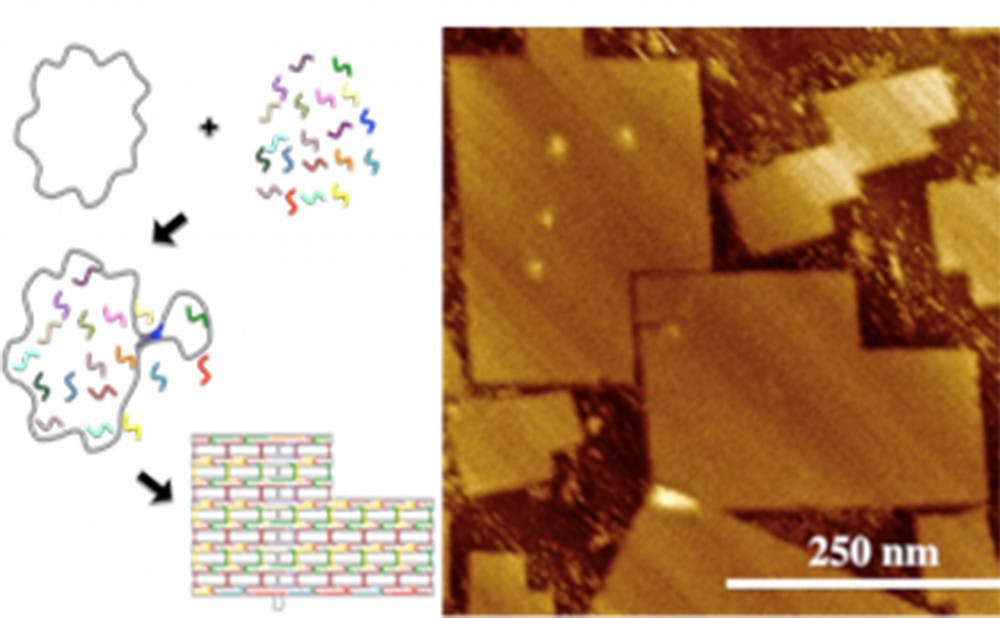The world's largest DNA origami has been formed thanks to a collaboration between researchers in North Carolina and Denmark.
A nanotechnological structure, the DNA origami was forged by a team from Duke, North Carolina State University and the University of Copenhagen. The structure—which is currently the largest in the world—is used in the construction of extremely small objects and has applications for the future of both the electronics industry and the medical field. While DNA origamis have been built before, this new structure is more than seven times larger than the previous origamis of its type and can be used for more real-world applications.
“The applications are diverse,” said Alexandria Marchi, who received her Ph.D. in biomedical engineering from the Pratt School of Engineering in May.
Marchi—lead author on the study which has been published in the online journal "Nano Letters"—said DNA origamis can be used "in any field that requires something to be built with single-digit nanometer precision.”
As a result, she noted, corporations and researchers can utilize DNA origami to control specific cells in the body, develop more effective nanomedicines and change the way engineers produce computer chips.
In order to create the origami, the researchers needed to combine a "scaffold strand" of biologically created DNA with a "staple strand" of chemically synthesized DNA, Marchi explained. These two components then self-assemble into the complete DNA origami with the desired final shape.
Stanley Brown, associate professor at the University of Copenhagen, was able to create a scaffold that was relatively inexpensive and seven times larger than the conventional scaffold strand.
The staple strands, however, were very expensive to create until Ishtiaq Saeem, a co-author on the paper, converted an inkjet printer to produce the staple strands at lower cost, Marchi said.
For Marchi, the success of her project is a culmination of her life interests.
“When I was younger, I always wanted to be a surgeon," Marchi said. "But when I first started undergrad at the New Mexico Institute of Mining and Technology, I had fallen in love with chemistry.”
She said the DNA origami she helped create is the result of her life-long passion for medicine and her recently discovered love of chemistry.
In the future Marchi said she hopes to continue her work with DNA origamis to learn more about how cells in the human body function.
Get The Chronicle straight to your inbox
Signup for our weekly newsletter. Cancel at any time.

